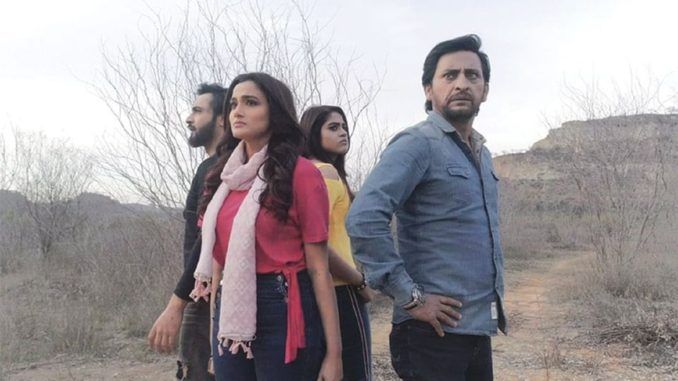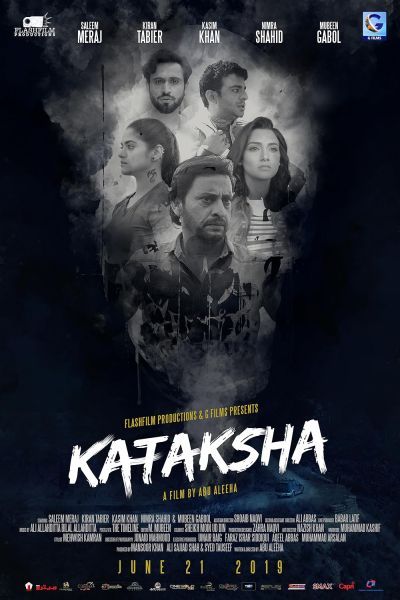
Rating: D
Dir: Abu Aleeha
Star: Kasim Khan, Namrah Shahid, Saleem Maira, Kiran Tabeer
One of the trickier things about this project is putting films in the right cultural context, especially in the cases where it’s clear that the movie is made for the local market, rather than an international one. There’s a certain common language. But the further you get away from the Anglo-American axis – and especially once you head for other continents – the more likely there are to be things which do not make sense to a consumer outside the intended audience. Sometimes you have to ask yourself, “Am I missing the relevant knowledge to pick up on subtleties, such as the elements included for the target community by the film-maker? Or is it simply a bit shit?”
As a sanity check in this regard, it’s always useful to check on local opinions. If a film is universally praised there, then there is a chance you are the problem. Which brings us to this, a product of Lollywood, as the Pakistani film industry is known. It’s relatively small compared to its much bigger brother in India. Definitive numbers don’t exist, but Pakistan perhaps produces around 50 features a year – a pittance, considering the population of the country is around 230 million. [India makes over 1,500, admittedly with a population six times as much] Horror has largely been ignored: indeed, this is reported to be the country’s first psychological horror movie. Unfortunately, it appears the makers have confused the terms “psychological” and “deadly dull.”
 Maybe something got lost in translation? Here’s a selection of the Pakistani reviews, which it’s safe to say are… a bit mixed, to put it mildly.
Maybe something got lost in translation? Here’s a selection of the Pakistani reviews, which it’s safe to say are… a bit mixed, to put it mildly.
- “A dark, story-less trip to the Katas Raj Temples that pretends to be a horror flick” — Galaxy Lollywood
- “A decent first attempt from an independent filmmaker, working on a shoe-string budget” — Hip In Pakistan
- “Will for sure stay with you for a while after watching.” — Pakistani Cinema
and my personal favourite: - “Just a guise for characters to have verbal diarrhoea, and then die” — Dawn
I will be shamelessly stealing the last line, and figuring out how to work it into a future review of some “elevated horror” piece. Obviously, the budget is not a Hollywood production: 9.8 million Pakistani Rupees, which at the 2019 conversion rate, would be about sixty thousand dollars. However, I suspect your money goes rather further there.
From a technical perspective, it’s fine. The camerawork is crisp and high-definition, and the images pop off the screen. Another thing in its favour is the use of a very interesting location, the Katas Raj Temples mentioned above. These are interesting, being a Hindu temple complex in Muslim Pakistan. The first review above does bring this up, citing a “blatant disregard for the holy sites… portraying the second holiest site of the Hindu community as a haunted place.” It’s what I mean about local context, not being an angle I’d have considered, despite being aware of the long-standing friction between the two religions, which is why Pakistan exists. On the other hand, they look great (below) and certainly add production value.
We do get a bit of background on the location, which as a foreigner, I didn’t mind. The pond is supposed to have formed from Lord Shiva’s tears, as he flew across the sky carrying the corpse of his wife Sati. This is considerably more poignant than anything the actual movie story can offer. Speaking of which, I suppose – and this is, very much, me dragging my feet – I should discuss it. It concerns a crew of four employees of a news channel, who travel to the temple to do a report there. Although you’d need a microscope to detect any actual journalism taking place. There’s veteran driver Asharaf (Mairaj), lecherous cameraman Salu (Khan), wilful presenter Aiman (Shahid), and gloomy producer Nazish (Tabeer).
Those single words of description are about all you need, since they basically define the characters. For instance Aiman has a tattoo (!), and gives a little speech about how there’s no point wearing a burqa, because her colleague who does is treated equally badly. Mind you, she manages to say with a straight face later on, “Pre-Islam, women had no rights to do as they wished.” Oh, you sweet, innocent summer child. Similarly, the extent of Nazish’s depiction, is largely limited to her currently going through a messy divorce. It’s of no relevance to anything else that goes on. Then again, there is not much going on to begin with.

The first half of the film is the journey to the temple complex, on which the team alternately bicker and bloviate. They stay the first night in a hotel, and travel to the location the next day. After more meaningless dialogue, and precisely zero reporting, as far as I can tell, they set up camp. One by one, they wander off, roaming the site at painfully extended length, before eventually falling victim to the ghosts that inhabit the ancient buildings. Well, I can only presume that’s the case, as there’s hardly any explanation provided for what’s going on. The soundtrack tries hard: maybe too hard, during moments when there’s nothing the slightest bit scary going on, for instance when we’re simply watching Aiman doing her morning exercises.
I’ll be honest, and admit I was barely paying attention by the time this finished. I had hopes this might be a hidden gem from 2019, like Diablo Rojo PTY, stemming mostly from an impressive, borderline beautiful, opening credit sequence. These began to implode almost as soon as the characters moved their mouths, in particular when I heard Aiman deliver this line from the opening scene: “Your lecherous looks keep raping my body all the time.” That is an actual line written by a screenwriter, and delivered by an actress. It wasn’t long before all my early optimism had become dust in the wind, and the slow grind began in earnest, towards the merciful release eventually offered by the end credits.
This review is part of our October 2024 feature, 31 More Countries of Horror.
